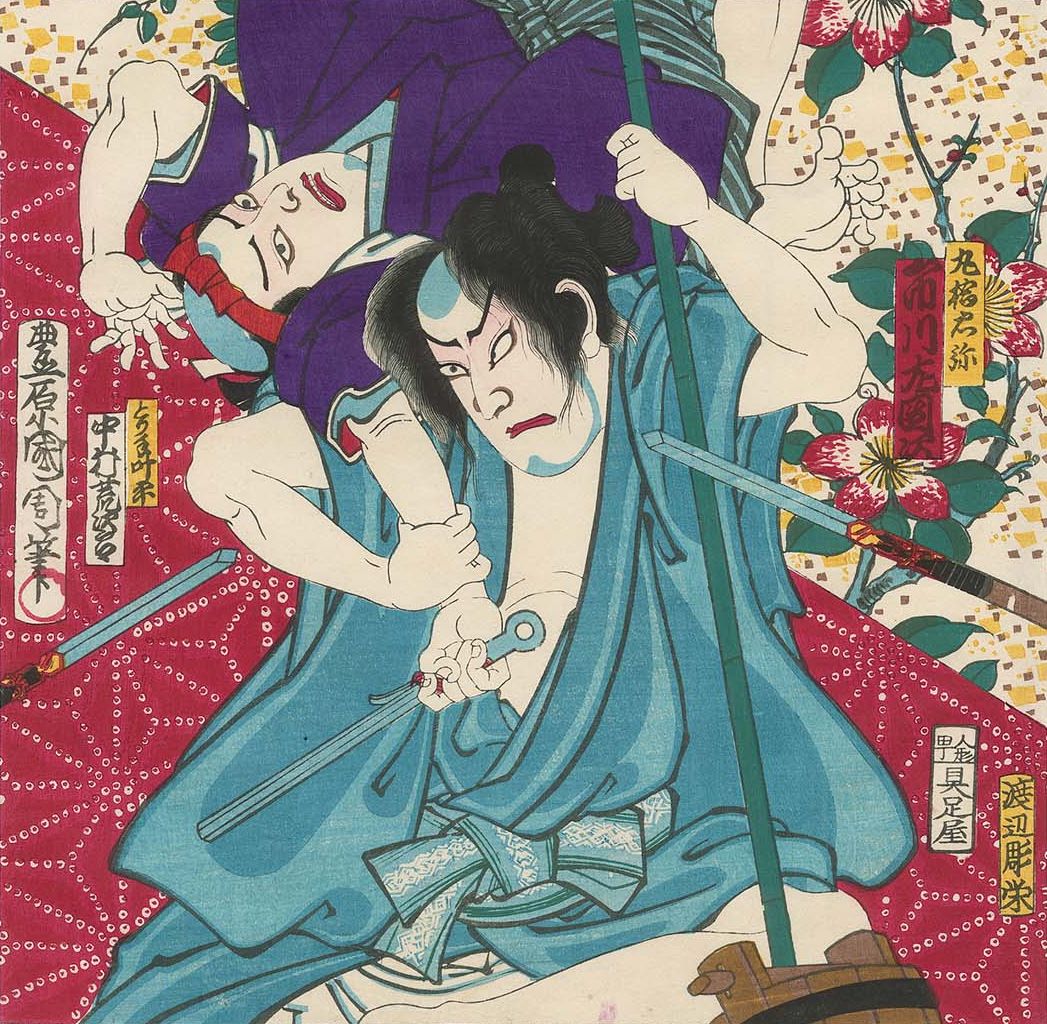Marubashi Chūya on:
[Wikipedia]
[Google]
[Amazon]
 was a ''
was a ''
 was a ''
was a ''rōnin
A ''rōnin'' ( ; ja, 浪人, , meaning 'drifter' or 'wanderer') was a samurai without a lord or master during the feudal period of Japan (1185–1868). A samurai became masterless upon the death of his master or after the loss of his master's ...
'' (masterless samurai
were the hereditary military nobility and officer caste of medieval and early-modern Japan from the late 12th century until their abolition in 1876. They were the well-paid retainers of the '' daimyo'' (the great feudal landholders). They h ...
) from Yamagata, and instructor in martial arts and military strategy, most famous for his involvement in the 1651 Keian Uprising The was a failed coup d'état attempt carried out against the Tokugawa shogunate of Japan in 1651, by a number of ''rōnin''. Though it failed, the event is historically significant as an indication of a wider problem of disgruntled rōnin through ...
which sought to overthrow Japan's Tokugawa shogunate
The Tokugawa shogunate (, Japanese 徳川幕府 ''Tokugawa bakufu''), also known as the , was the military government of Japan during the Edo period from 1603 to 1868. Nussbaum, Louis-Frédéric. (2005)"''Tokugawa-jidai''"in ''Japan Encyclopedia ...
. He is said to have been a man of great strength and good birth whose distaste for the shogunate stemmed primarily from a desire for revenge for the death of his father, killed by the shogunal army at the 1615 siege of Osaka
The was a series of battles undertaken by the Japanese Tokugawa shogunate against the Toyotomi clan, and ending in that clan's destruction. Divided into two stages (winter campaign and summer campaign), and lasting from 1614 to 1615, the siege ...
. The identity of his father is not clear, but may have been Chōsokabe Motochika
was a prominent ''daimyō'' in Japanese Sengoku-period.
He was the 21st chief of the Chōsokabe clan of Tosa Province (present-day Kōchi Prefecture), the ruler of Shikoku region.
Early life and rise
He was the son and heir of Chōsokabe Kuni ...
.
Originally a skilled student of Yagyū Shinkage-ryū, he later switched for Hōzōin-ryū
is a traditional school ('' koryū'') of Japanese martial arts that specializes in the art of spearmanship (''sōjutsu''). Hōzōin-ryū was founded by Hōzōin Kakuzenbō In'ei (宝蔵院 覚禅房 胤栄, 1521–1607) in c. 1560. In'ei was ...
, the most famous style of Sōjutsu
, meaning "art of the spear", is the Japanese martial art of fighting with a .
Origins
Although the spear had a profound role in early Japanese mythology, where the islands of Japan themselves were said to be created by salt water dripping fro ...
, thus Marubashi's weapon of choice became the Jūmonji Yari
is the term for a traditionally-made Japanese blade (日本刀; nihontō) in the form of a spear, or more specifically, the straight-headed spear. The martial art of wielding the is called .
History
The forerunner of the is thought to be a ...
, and with his skills and reputation as a martial artist, found work teaching martial arts and strategy. Marubashi met Yui Shōsetsu
Yui Shōsetsu (由井正雪 1605 – September 10, 1651) was a military strategist, and leader of the unsuccessful 1651 Keian Uprising. Though a commoner, and thus not officially of the samurai class, Yui was known as one of the "Three Great ''Rō ...
, later to be his partner in organizing the Keian Uprising, at the armorer shop run by the latter. At some point after 1645, the two began to plot their rebellion, which would revolve around starting a fire in the capital of Edo and using this as a distraction to allow the rebels entry into the castle.
They planned to strike shortly after the death of ''shōgun
, officially , was the title of the military dictators of Japan during most of the period spanning from 1185 to 1868. Nominally appointed by the Emperor, shoguns were usually the de facto rulers of the country, though during part of the Kamakur ...
'' Tokugawa Iemitsu
Tokugawa Iemitsu (徳川 家光, August 12, 1604 – June 8, 1651) was the third ''shōgun'' of the Tokugawa dynasty. He was the eldest son of Tokugawa Hidetada with Oeyo, and the grandson of Tokugawa Ieyasu. Lady Kasuga was his wet nurse, who a ...
in 1651, but Marubashi fell quite ill at that time, and revealed secrets of the plot in his delirium. Before any part of the plot was initiated, Marubashi was arrested in Edo. Yui killed himself shortly afterwards, while Marubashi and a number of the other rebels were crucified, their families beheaded.
He is the titular figure in an 1870 kabuki
is a classical form of Japanese dance-drama. Kabuki theatre is known for its heavily-stylised performances, the often-glamorous costumes worn by performers, and for the elaborate make-up worn by some of its performers.
Kabuki is thought to ...
play by Kawatake Mokuami
(birth name Yoshimura Yoshisaburō; 吉村芳三郎) (1 March 1816 – 22 January 1893) was a Japanese dramatist of Kabuki. It has been said that "as a writer of plays of Kabuki origin, he was one of the greatest, if not the greatest, Japan ...
also known as ''Keian Taiheiki : ''For the Zen Buddhist monk, see Keian Genju (1427–1508).''
was a after ''Shōhō'' and before '' Jōō.'' This period spanned the years from February 1648 through September 1652. The reigning emperor was .Titsingh, Isaac. (1834) ''Annales d ...
''.
References
*Frederic, Louis. "Marubashi Chūya". ''Japan Encyclopedia''. Cambridge: Harvard University Press, 2002. *Sansom, George. ''A History of Japan: 1615–1867''. Stanford, California: Stanford University Press, 1963. pp54–56. 1651 deaths Japanese rebels Japanese educators Samurai Year of birth unknown {{Samurai-stub